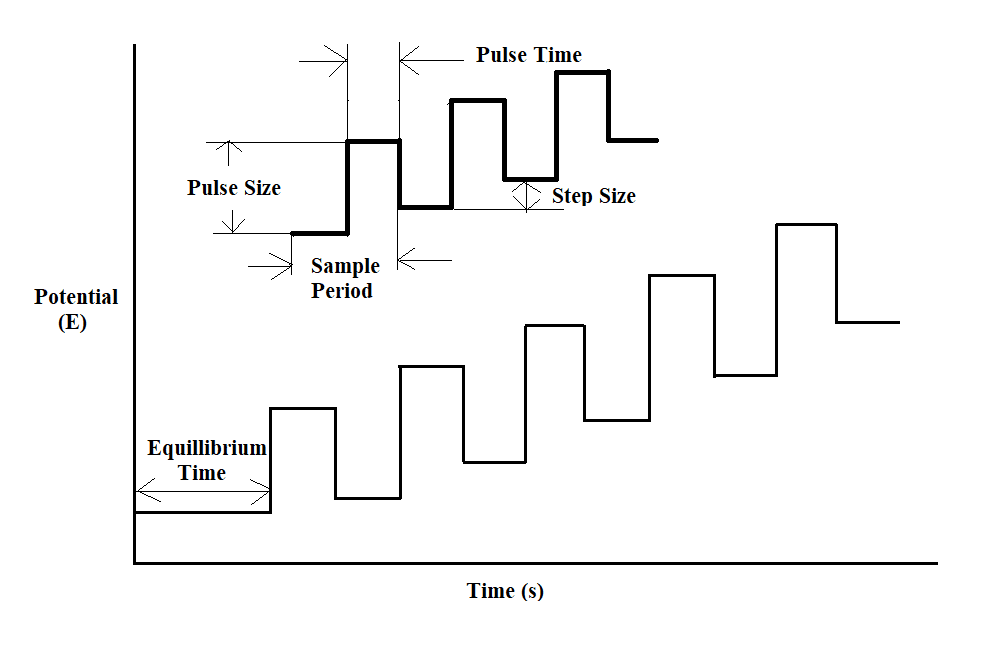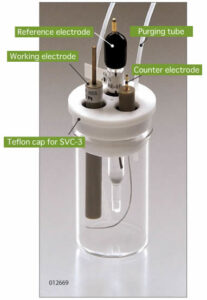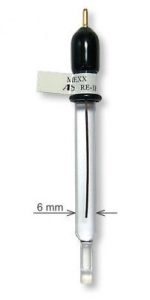Differential Pulse Stripping Voltammetry (DPASV) is a powerful electrochemical analytical technique that allows for the detection and quantification of a variety of metal ion species at very low concentrations in aqueous media. This technique consists of two main steps; Accumulation (preconcentration) and Stripping. The first step (Accumulation) is the electroplating of the analyte of interest on the electrode surface at a constant potential, followed by the second step (Stripping) which involves a potential sweep during which the preconcentrated analyte is stripped back to the solution, a process resulting in a current response proportional to the analyte concentration in the sample.
The advantages of DPASV include sensitivity (extremely low detection in ppb), high accuracy, speed and modest cost.

Figure 1: Potential wave form for differential pulse voltammetry.
The potential wave form is composed of regular pulses that are consistently amplified and overlaid onto a staircase-like wave. Here, the current is sampled twice in each Pulse Period (once before the pulse, and at the end of the pulse), and the difference between these two current values is recorded and displayed
Differential pulse anodic stripping voltammetry (DPASV) is important for the determination of for the detection of trace, heavy metal ions in very low concentrations in various sources like drinking water and soil, and in food industry for the determination of food contaminants such as toxic metal, pesticide, fertilizer, etc.
Experimental Part
Instrumentation
In this experiment a compact and portable potentiostat, PhadkeSTATTM20 which runs on “EC-Prayog” a Windows supporting software was used.
Requirements
A 3- electrode voltammetry cell, a Glassy carbon working electrode, a silver/silver chloride reference electrode, a Platinum counter electrode, a micropipette. (range from 100ul-1000ul)
The working electrode was cleaned by lightly polishing with alumina and then was rinsed with water. The connection between potentiostat and the cells are: Green= working; White= reference; Red= counter; Black= ground.











0 comments